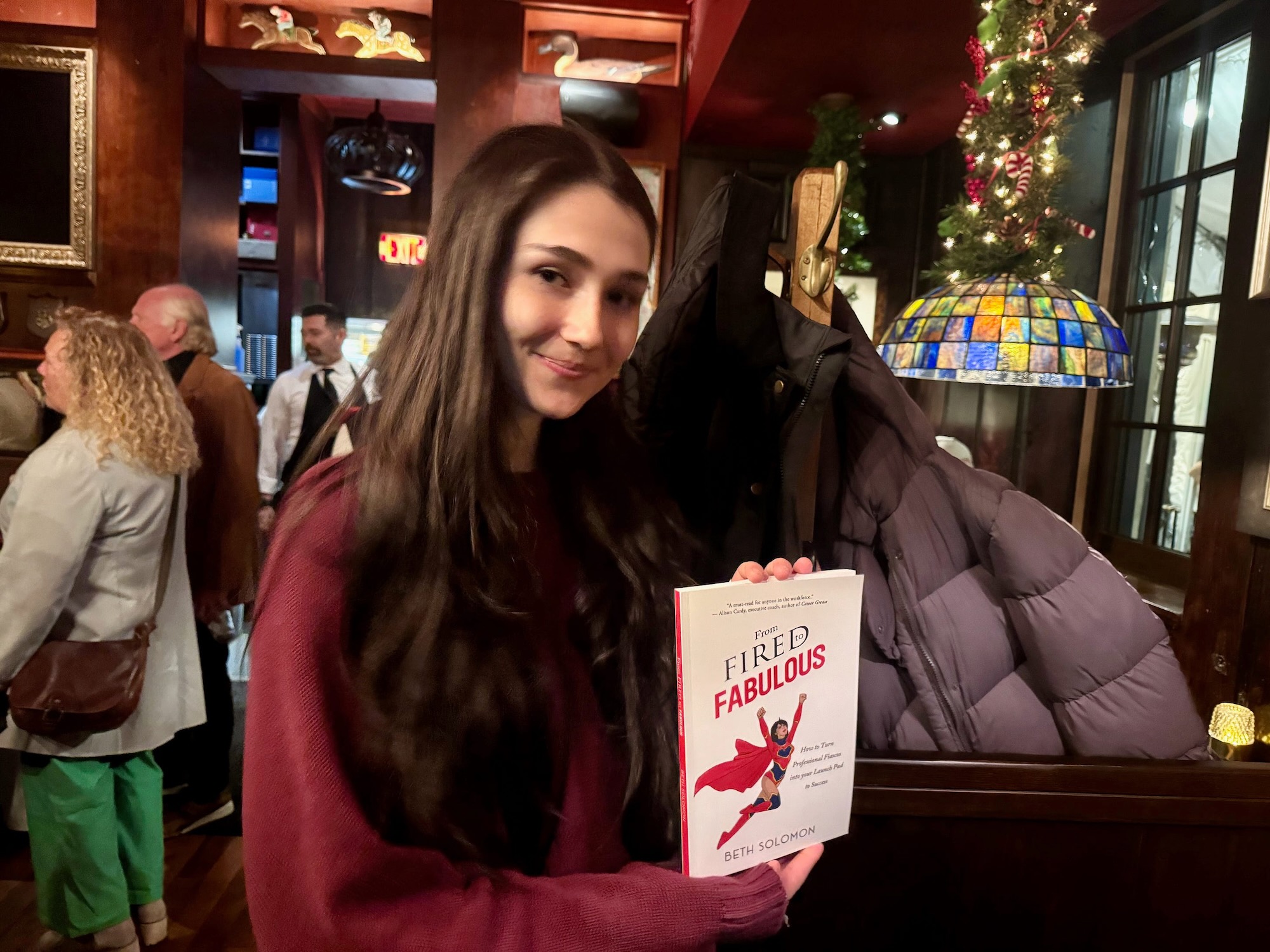From Fired to Fabulous
Beth Solomon's launch party at Martin's.

By guest contributor Isabela Sassoon
Following the release of author Beth Solomon’s book From Fired to Fabulous, a launch party was held at the historic Martin’s Tavern in Georgetown. The event was filled with an abundance of guests and elegant drinks to complement the buffet spread. She invited me to join her at a booth featuring one of the many plaques honoring esteemed individuals, which seemed to adorn nearly every booth in sight. I asked her about the writing process for this book, and that’s where we began.

In her last job, (I assume she means her job previous to her current one), she was not fired, instead the opposite was true. Not only had she not been fired, but it was the longest she’d held onto a job, and that’s when she said she realized that she not only had been fired often, but hired too—just as often. That is, where she said, her inspired fire had been ignited.
She was embarrassed, she recounted, that she had been fired so many times, she wrote in the book that she’d never met someone who’d been fired as many times as she. She thought it was funny that she felt this embarrassment later, but in her writing she describes being embarrassed at the time, these moments being drowned out by life and over time forgotten. However, Beth luckily recalled these moments and the anecdotes attached to them, knowing then that there was a larger story to share and a message to be platformed by it.
The idea of writing a book was terrifying and overwhelming to her. It was 2019 and while she was intimidated she was also interested. Five years later she is of the opinion that “It’s really a lot of work. It’s way more work than you think it would be.”—Amen
Do we have key takeaways in this book? Yes, and they’re quite apparent. I want to quote Beth directly for these points, so I will.

One: “Getting fired makes you stronger, and in spite of how terrifying and humiliating it is, it leads to better jobs, more money, more opportunity, and a better life in the end, so that no one should be afraid of being fired.”
Two: “The workplace is increasingly transitory. In other words, technology has made it much easier to hire people and much easier to fire them. So the churn in the workplace is increasing. And so we all need to be ready to lose our job.”
Three: “It’s important to be prepared financially for this because it will happen, and it takes some of the terror out of it if you save six months and you can live on your savings for that time until you get your next job.”
The prologue introduces the reader into the purpose of the book. The book’s early chapters provide a crucial foundation to understanding Beth’s authorial voice and paradigms, while establishing a framework for understanding the rest of the text. As the book’s chapters transition into subject-specific discussions, these core values are integrated through various topics, creating chapters that are distinct in topic yet unified by repetition and reintegration.
Once the central message is understood, the book allows for a more flexible reading experience, enabling readers to move between subjects without losing the thread of the author’s overarching ideology. While it can be read sequentially from start to finish, the foundational insights from the opening chapters empower readers to explore the content non-linearly, diving into topics of personal interest with ease. Sometimes when Beth is coaching someone, she’ll purposely send them to the chapter that was curated to guide the reader through that predicament. Thus, I suggest reading the prologue up to “No Shame” and then reading whatever you’d like next that pertains to a need.
She recalled how she wanted to make the book her personal narrative while including “embarrassing stories to make it interesting for the reader” while maintaining mostly “nuts and bolts practical advice” and encompassing a discussion for a topic that is succinct in each stand-alone chapter. “You can read it cover to cover,” she said, “or pick whatever you want,” but she recommends you read the beginning first, because it is her intention that you read her personal story, then you can pick by necessity or interest.
She notes that you can have a good read if you read it sequentially. You can understand her main points while engrossed in the narrative she has structured through personal anecdotes and those of other people, whose stories contribute to the grip of the book on the reader. At the same time, you don’t need to follow her instructions step by step if it’s just a leisure read rather than an informational read. Her point is that this book can be both, depending on who picks it up.
Read more here.





